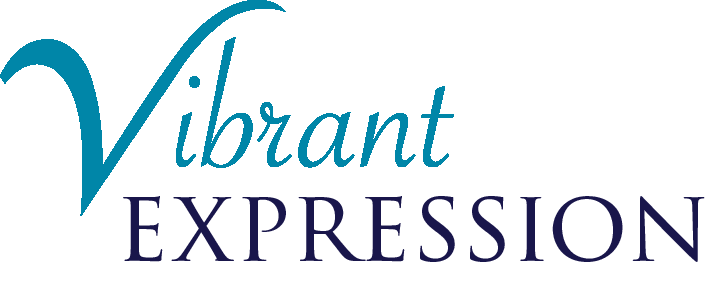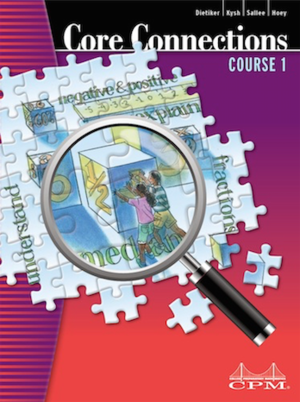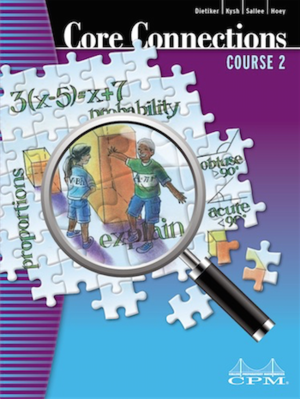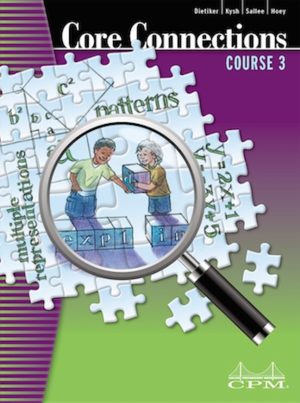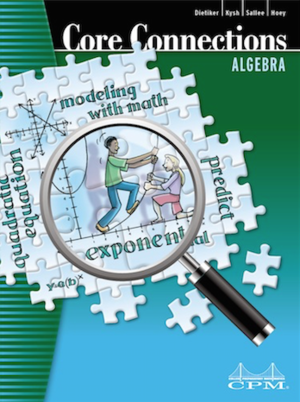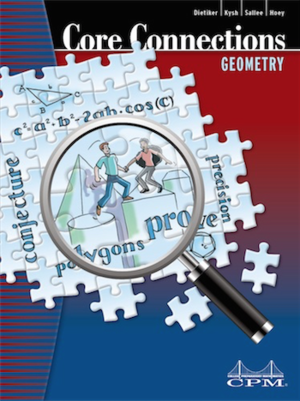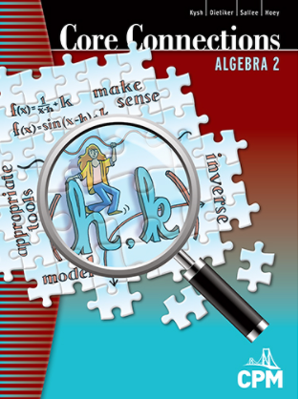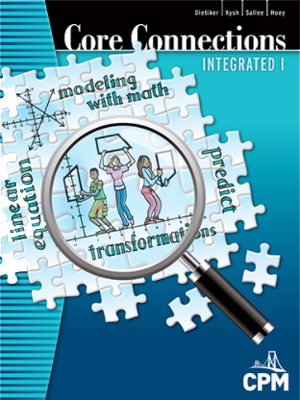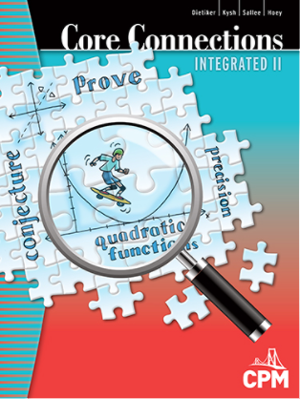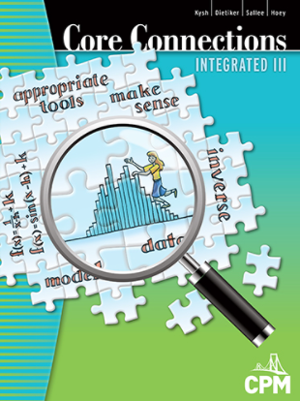College Preparatory Mathematics (CPM) Textbooks
I highly recommend College Preparatory Mathematics (CPM) textbooks and use them as my preferred teaching curriculum. One of the things I love about this company is their uncompromising focus on the needs of the student. This shows up in subtle ways, such as the option for purchasing two paperback books (one for each semester) instead of a single 1.5″ thick hardback book (very heavy in the backpack).
It also shows up in the care and attention with which the lessons are designed. The focus of this curriculum is to encourage student exploration and discovery of sound mathematical concepts. Instead of presenting a formula, demonstrating “where the numbers go,” and giving students 30 similar practice problems, as most traditional textbooks do, CPM engages students with real life situations. Almost all problems are “word problems,” which require the student to read, interpret a situation, identify a strategy for solving the problem, and defend their solution.
Spiral Approach. Problems are varied, and homework is specifically designed to review previously taught concepts. Only one or two questions will focus on the lesson which has just been presented. This gives students time to think about what they have just learned, and allows them to build their understanding over time. Each time a concept is revisited, students are challenged to integrate it a little more deeply.
Topics are presented within a context that appeals to students, and combined in a way that simultaneously establishes relevance and application. For example, fractions are taught in conjunction with probability, as the student focuses on the fairness of games. Students learn about integers within the context of the annual frog jumping contest in Calaveras, CA, and real-life Olympic data is used for graphing and discovering trends.
Skills students develop with this program:
- collaboration
- communication
- creative thinking
- appreciation for alternative solutions and unique approaches
- the importance of clearly explaining and writing their solutions
- confidence in their abilities as mathematicians
- the ability to defend their thinking and justify their solutions
- deep understanding of mathematical concepts
